Daniel Bernoulli
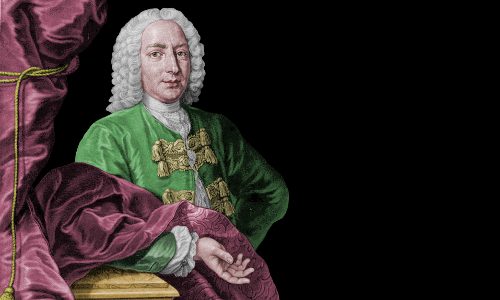
Lived 1700 – 1782.
Daniel Bernoulli published his masterpiece Hydrodynamica in 1738 only to see it plagiarized by his own jealous father. Bernoulli explained how the speed of a fluid affects its pressure: the Bernoulli Effect explains how an airplane’s wings generate lift. Bernoulli’s kinetic theory anticipated James Clerk Maxwell’s by more than a century, and Bernoulli carried out ground-breaking work on the theory of risk, utilized in areas as diverse as economics and evolution.
Beginnings
Daniel Bernoulli was born in the city of Groningen in the Netherlands on February 8, 1700.
His parents were Johann Bernoulli and Dorothea Falkner.
Mathematics was in their Blood
Daniel’s mother Dorothea Falkner came from a well-known and wealthy family in Basel, Switzerland.
Daniel’s mother Dorothea Falkner came from a well-known and wealthy family in Basel, Switzerland.
Daniel’s father Johann Bernoulli also came from Basel. He was a qualified medical doctor and brilliant mathematician, one of the first to master and expand the new mathematics of calculus. Johann’s reputation was so high that he was called the “Archimedes of his age.”
Not surprisingly, with a father like Johann, Daniel made rapid progress in mathematics. Daniel’s two brothers became first-rate mathematicians too. Daniel was probably taught more by his older brother Nicolaus than his father, who, although brilliant, could be unsympathetic and hard on Daniel.
Mathematics seems to have run in the Bernoulli family, because Johann’s older brother Jacob was also a brilliant mathematician.
Whatever You Do, Don’t Become a Mathematician!
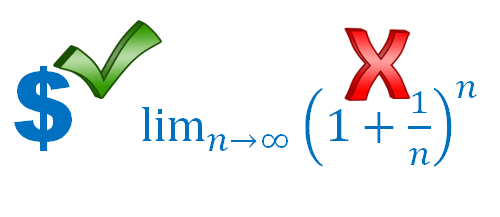

Daniel’s father held the chair of mathematics at the University of Groningen.
In 1705, when Daniel was five, his family relocated to Basel in Switzerland, his parents’ hometown, where his father had been made chair of mathematics at Basel University.
Despite the high reputation he enjoyed as a mathematician, Daniel’s father resented the low pay he felt mathematicians received. The Bernoulli family had once been wealthy merchants and Daniel’s father believed Daniel’s personal qualities were those needed to return the family to its former glory.
He pushed a reluctant Daniel to study business. Daniel, however, had a burning passion for mathematics. After some toing and froing – they were both rather obstinate – father and son reached a compromise of sorts: Daniel would study medicine.
Bernoulli’s European Tour
Daniel was as good as his word. Beginning at age 15 he studied medicine in Heidelberg, Germany; Strasbourg, France; and Basel, Switzerland. His father, happy that Daniel was fulfilling his part of the bargain, agreed to teach him advanced mathematics and physics – particularly his own ideas about the conservation of energy.
Daniel was as good as his word. Beginning at age 15 he studied medicine in Heidelberg, Germany; Strasbourg, France; and Basel, Switzerland. His father, happy that Daniel was fulfilling his part of the bargain, agreed to teach him advanced mathematics and physics – particularly his own ideas about the conservation of energy.
Bizarre Selection Process
Daniel Bernoulli graduated as a doctor of medicine in 1721, age 21, with a thesis on respiration.
Daniel Bernoulli graduated as a doctor of medicine in 1721, age 21, with a thesis on respiration.
He hoped to get a job teaching at the University of Basel, but lost out in a bizarre selection procedure where candidates drew lots to see who would get teaching jobs.
While trying and failing to find work in Basel, Bernoulli continued studying mathematics.
Venice, Fun, and Mathematics
In 1723 Bernoulli moved to Venice, Italy to learn practical medicine. He visited patients and worked in hospitals alongside doctors. He also spent time at the opera, theater, and fancy-dress parties.
In 1723 Bernoulli moved to Venice, Italy to learn practical medicine. He visited patients and worked in hospitals alongside doctors. He also spent time at the opera, theater, and fancy-dress parties.
However, he could not abandon his love of mathematics – particularly applied mathematics. He was eager to unravel secrets of the universe, following in the footsteps of Galileo and Newton.
Bernoulli carried out fluid mechanics experiments in which he measured water flowing out of a vessel. He noticed water flowed out faster as the height of the liquid in the vessel was increased. He established a mathematical relationship between the height of the water in the vessel and its pressure and its velocity flowing from the vessel. He also looked at the situation from the viewpoint of converting potential energy to kinetic energy.
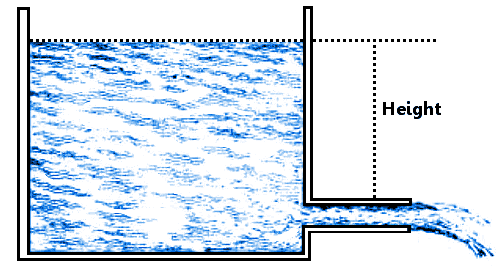
The greater the height of the water, the faster it emerges from the vessel.
In 1724 he published his first work, Mathematical Exercises in which he made useful contributions to the sciences of fluid mechanics, probability theory, differential equations, and geometry.
A Prize and a Professorship
While in Venice, a seafaring city, Bernoulli learned the Paris Academy was offering a generous prize for the best design of a sand-clock for timekeeping at sea. His response was to design an hour glass whose trickle of sand was unaffected by rough seas. For this work he was awarded the Grand Prize. This, combined with his Mathematical Exercises, which had been well received, won him the offer of a professorship at the Academy of Sciences in Saint Petersburg, Russia.
While in Venice, a seafaring city, Bernoulli learned the Paris Academy was offering a generous prize for the best design of a sand-clock for timekeeping at sea. His response was to design an hour glass whose trickle of sand was unaffected by rough seas. For this work he was awarded the Grand Prize. This, combined with his Mathematical Exercises, which had been well received, won him the offer of a professorship at the Academy of Sciences in Saint Petersburg, Russia.
Given his medical background, he was appointed as a professor of physiology, not mathematics.
He and his older brother Nicolaus, who had been offered a mathematics professorship at St Petersburg, traveled there together in 1725.
Saint Petersburg
Bernoulli’s first works in Saint Petersburg reflected his position – he wrote papers on topics such as the optic nerve, muscles, and medical mathematics.
Bernoulli’s first works in Saint Petersburg reflected his position – he wrote papers on topics such as the optic nerve, muscles, and medical mathematics.
Although in his later years Bernoulli was reported to be easy going, this was not the case at first at the Academy, where he got into some fierce academic disagreements with other professors.
Unfortunately, less than a year after arriving in Russia, Nicolaus died of fever. Daniel was miserable and the bitter Russian weather did not improve his spirits.
His father tried to help, sending his best mathematics student, Leonhard Euler, to Saint Petersburg to work with his lonely son.
Euler, whose name would soon be revered as one of the greatest mathematicians in history, reached Saint Petersburg in 1727. Not only did he bring the tea, coffee, and brandy Bernoulli longed for, the pair of them were soon happily exchanging ideas, inspiring Bernoulli to do the best work of his career.
It should be remembered that Daniel Bernoulli was brilliant in his own right, independent of Euler. He showed particular genius in his ability to perform meaningful experiments and to translate his observations into physical laws and mathematics. Euler, a more powerful mathematician, could refine Bernoulli’s mathematics.
In 1730 Bernoulli was appointed professor of mathematics at the Academy, but by then he was already planning to leave.
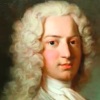 “…there is no philosophy which is not founded upon knowledge of phenomena, but to get any profit from this knowledge it is absolutely necessary to be a mathematician.”
“…there is no philosophy which is not founded upon knowledge of phenomena, but to get any profit from this knowledge it is absolutely necessary to be a mathematician.”
DANIEL BERNOULLI
Daniel Bernoulli’s Contributions to Science
Many of Bernoulli’s greatest discoveries were contained in his masterpiece on fluid mechanics – Hydrodynamica, completed in Saint Petersburg in 1733 and tidied up for publication in Strasbourg in 1738.
The Kinetic Theory of Gases
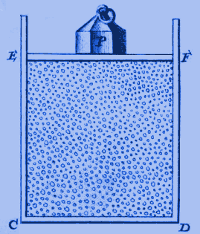
Bernoulli’s diagram from Hydrodynamica illustrating his kinetic theory of gases. The downward force from the weight is balanced by the upward force of the gas particles colliding perfectly elastically with the piston.
This type of kinetic theory remained controversial until it was universally accepted in the 1800s.
In 1729 Euler made an attempt to explain the behavior of gases mathematically with a kinetic theory based on Robert Boyle’s gas data from 1662. Euler went wrong by assuming all the gas particles would move at the same speed.
Bernoulli’s stroke of genius was to see that the particles would have a distribution of different speeds.
Bernoulli’s skill in interpreting the physical world allowed him to introduce a statistical factor into kinetic theory, anticipating the work of James Clerk Maxwellover a century later.
The Bernoulli Effect
Bernoulli returned to the ideas he had first learned from his father and developed them. He applied the idea of energy conservation to fluids in motion.
In doing so he discovered The Bernoulli Effect, the discovery he is most famous for, that when a fluid flows through a region in which its speed increases, its pressure will fall. He correctly described the effect mathematically.
The Bernoulli Effect has many real-life applications and is often cited as the reason aircraft wings provide lift.
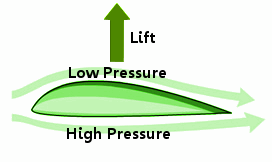
The Bernoulli Effect on an airplane wing. The wing is shaped so that air flows faster over the upper part of the wing than the lower. This results in a pressure difference that produces lift.
Measurement of Risk
In the early 1730s Bernoulli wrote a paper in a totally different field from his usual mechanics. Again it took him until 1738 to publish it – Exposition of a New Theory on the Measurement of Risk. Bernoulli used the geometric mean of data to assess risk; how to minimize risk; and situations in which risk is best avoided altogether.
The paper looked at the difference between wealth and utility. It influenced economic theory, portfolio theory, evolutionary biology, and behavioral ecology.
 “…the determination of the value of an item must not be based on its price, but rather on the utility it yields. The price of the item is dependent only on the thing itself and is equal for everyone; the utility, however, is dependent on the particular circumstances of the person making the estimate. Thus there is no doubt that a gain of one thousand ducats is more significant to a pauper than to a rich man though both gain the same amount.”
“…the determination of the value of an item must not be based on its price, but rather on the utility it yields. The price of the item is dependent only on the thing itself and is equal for everyone; the utility, however, is dependent on the particular circumstances of the person making the estimate. Thus there is no doubt that a gain of one thousand ducats is more significant to a pauper than to a rich man though both gain the same amount.”
DANIEL BERNOULLI
 “…in the absence of the unusual, the utility resulting from any small increase in wealth will be inversely proportionate to the quantity of goods previously possessed.”
“…in the absence of the unusual, the utility resulting from any small increase in wealth will be inversely proportionate to the quantity of goods previously possessed.”
DANIEL BERNOULLI
Some Personal Details and the End
Bernoulli could not settle in Saint Petersburg, and his health was never good there.
He arrived back in Basel in 1733 to begin a new role as chair of anatomy and botany. In the same year his entry for the Grand Prize of the Paris Academy – a work on the inclinations of the planets’ orbits – finished joint-first.
This turned out to be not entirely good news. The trouble was that he shared the prize with his father, who was outraged that anyone could judge his son to be his equal in mathematics. From that time on, father refused to speak to son.
Daniel’s masterpiece Hydrodynamica was finally published in 1738, although it had been completed and submitted to the Academy in Saint Petersburg in 1733. In a despicable act of vengeance, his father plagiarized Hydrodynamica and released a book called Hydraulica, which he dated as completed in 1732.
Daniel was shocked by his father’s behavior, writing:
 “I have been robbed of my entire Hydrodynamica, not one part of which I owe to my father and I have been deprived of the fruits of 10 years of work.”
“I have been robbed of my entire Hydrodynamica, not one part of which I owe to my father and I have been deprived of the fruits of 10 years of work.”
DANIEL BERNOULLI
Thankfully for Daniel, he was judged to be the true originator of the ideas in the book.
Daniel won the Paris Academy’s Grand Prize a total of 10 times, often for nautically themed work, including: the best shape for a ship’s anchor; theory of the tides; magnetism; ocean currents; and improving the stability of ships in high seas.
In 1750, age 50, Daniel Bernoulli was appointed to the chair of physics at the University of Basel. His lectures and demonstrations were enormously popular, and he continued in this position until he retired at age 76.
He received offers of chairs in other cities, but never left Basel again. He corresponded extensively with other scientists, of whom his favorites were Pierre Bouguer, Alexis Clairaut, Pierre Louis Maupertuis, his old friend Leonhard Euler, and Euler’s son Johann Euler.
He lived for his work; he never married and had no children. He considered marriage when he was younger, but the woman in question turned out to be very mean with money, which he found off-putting. Bernoulli respected simplicity of lifestyle and frugality, but not meanness.
In the end, he valued his freedom and a quiet, peaceful, academic way of life too much to marry.
Daniel Bernoulli died age 82 on March 17, 1782 in his sleep in Basel, Switzerland.
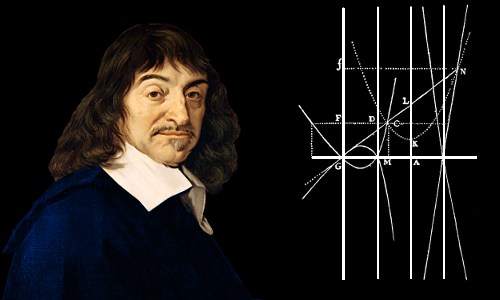
No comments:
Post a Comment